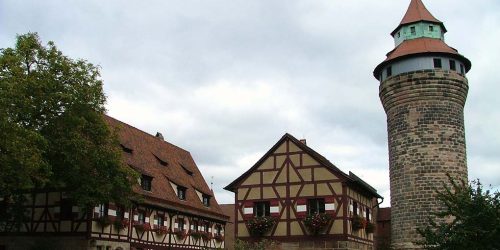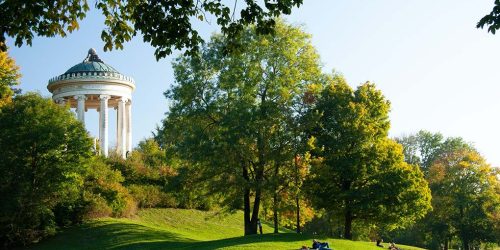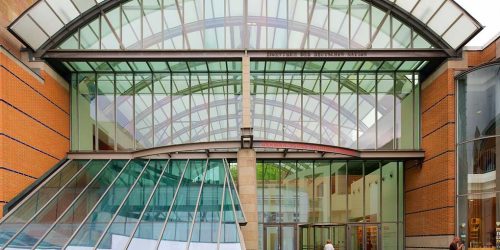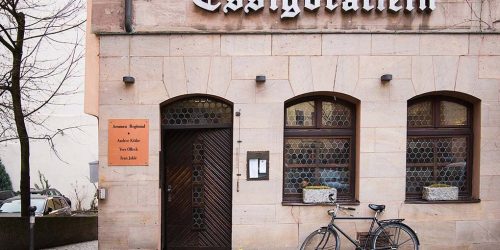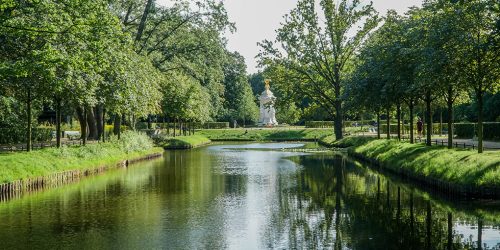Traversing Beneath the Clock Tower: A Timeless Stroll Through Bern’s Old Town
Arriving in Bern just as dawn broke, gentle sunlight filtered through the train window, casting a golden sheen over the city’s contours. The train rolled into Bern Hauptbahnhof, and standing at the door, I felt a blend of familiarity and wonder. I was about to embark on a quiet journey steeped in history. Bern, a medieval city encircled by the Aare River since its founding in 1191, has kept its medieval charm remarkably intact. It may not stun you at first glance, but the deeper you walk, the more alluring its layers become.
I resolved to spend the day exploring Bern’s Old Town—classified by UNESCO as a World Heritage Site and once a major European commercial and political hub. Here lie endless arcades, centuries-old clock towers, ornate fountains tucked under archways, and tucked-away artisanal bookstores and cafés. Every brick and cobblestone seems to whisper the stories of the past. Without a fixed itinerary, I let the worn stones guide me toward hidden corners untouched by guidebooks.
1. From the Station Into History: A First Ray on Spitalgasse’s Arcades
Stepping a few meters from the station lands me on Spitalgasse, one of the primary entries into the Old Town and the starting point of Bern’s famed arcades. These medieval arcades span over 6 kilometers—Europe’s longest continuous arcade—offering shelter for shoppers and wanderers alike. I lifted my gaze to the row of old houses above, their window sills adorned with vivid geraniums, as if time itself then paused amid midday tranquility.
The shopfronts here are understated yet charming, with wood-framed windows, stained glass, and brass handles. Each door seemed to hold a story. I was drawn to an antiquarian bookstore whose window displayed 17th-century maps and handwritten German notebooks. The owner, a silver-haired gentleman, stepped out with a smile: “Come inside—time moves slower in here.”
I leafed through a beautifully illustrated book charting Bern’s evolution, with hand-drawn maps tracing the transition from fortified walls to narrow lanes. Exiting the bookstore, slanted sunlight swept down the arcade, shadows stretched long, and street musicians tuned their instruments—suddenly, the air felt richer with melody.
2. Beneath the Clock Tower: Zytglogge’s Heartbeat of Time
A short walk brought me to Bern’s most iconic landmark: the Zytglogge clock tower. Positioned at the crossroads of the Old Town’s central axis, it stands as both a symbol of time and a guide to direction. At every hour, its ancient mechanical clock springs to life: puppets parade along tracks and the resonant chime fills the air of the narrow alleys.
Having checked the time carefully, I stood below the gilded astronomical clock, awaiting the midday chime at 12. Though tourists clustered around, when the first bell tolled, the entire square seemed to pause. All heads tilted skyward, apparently moved by the fusion of mechanics and time.
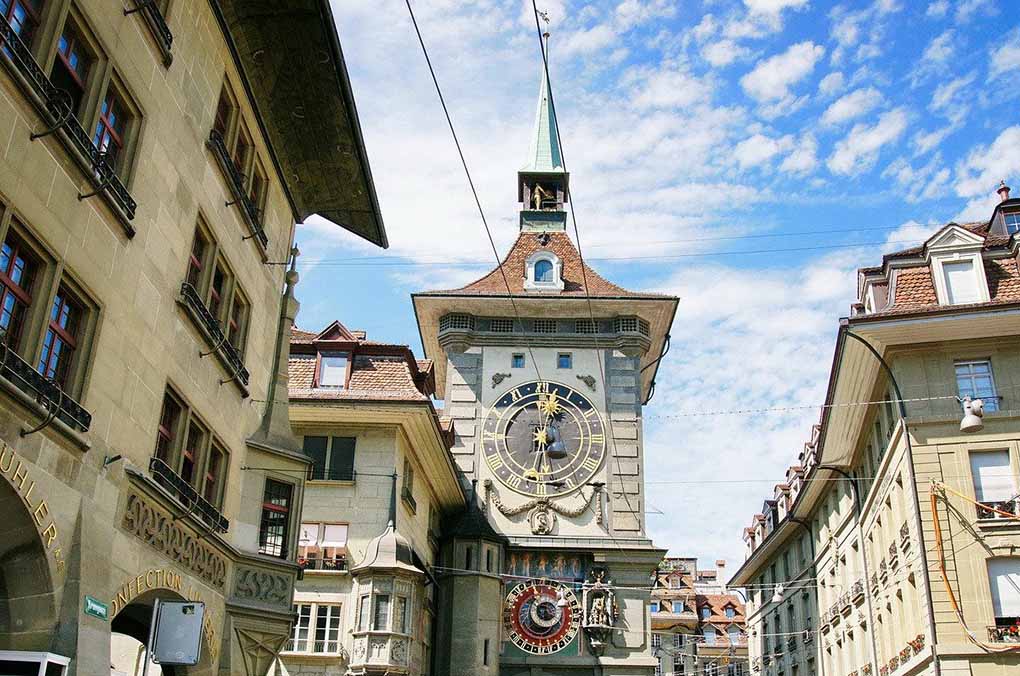
I had reserved a guided tour and ascended a wooden staircase, traversing seven centuries of history. The clock’s internal gears still worked flawlessly. The guide explained how the tower set the daily rhythm for Bern’s residents. I ran my fingertips over the smooth planks and stone walls polished by time—there was a profound reverence there: a civilization’s homage to time itself.
3. Sculptural Totems Along the Fountain Route: Justice, Bears, and Dancers
From Zytglogge, I continued along Kramgasse, my favorite street in the Old Town. Running down the center is Bern’s unique fountain system, with ornate sculptures every few dozen meters. They serve not only as water sources but as civic totems embedded with symbolic meaning.
The Justice Fountain depicts a blindfolded goddess bearing scales and a sword—a reminder of equality before the law. The Bear Fountain showcases the city’s patron animal; legend says Bern was named after a bear (“Bär” in German). Throughout the Old Town, you’ll spot bear statues, symbols, and even sweet treats shaped like bears. I sampled a bear-shaped almond biscuit—it was crisp outside, soft within, sweet but not cloying—delightfully unexpected.
Nearby, a Dancing Fountain features figures in festive attire, eternally twirling around a column. I sat on the bench beside it, listening to a street musician playing an accordion while pigeons wandered at my feet. This ritualistic yet unvarnished street life is perhaps the most enchanting face of Bern’s Old Town.
4. Rosengarten Heights: A Poetic Panorama of Rooftops
If the Old Town’s cobblestones walk you through history, Rosengarten offers the most poetic vantage point. Perched above the eastern slope, the rose garden commands sweeping views of the city. The winding path includes artist studios and hidden courtyards along the ascent.
At the top, I found an empty grassy spot to sit. In front lay a panorama of red-tiled roofs and church spires, with the Aare River elegantly curving through the city and bridges arching over it, distant hills softly veiled in mist. A breeze carried a hint of rose fragrance as I penned a few lines in my notebook to capture a moment of peace.
Summer turns this garden into a riot of color with over 200 rose varieties in bloom. I ordered a local beer at the garden café and sat for an hour, watching families wander, children play, and adults ruminating in the shade. There’s no better place for reflection and contemplation.
5. Einstein’s Residence: Where Ideas Reshaped the World
Descending from the hill, I made my way to Einstein’s former residence, nestled quietly in the heart of Bern. From 1903 to 1905, he lived here on the second floor, during his time as a clerk at the Swiss Patent Office. This modest apartment, preserved with its original furnishings, exudes a kind of quiet genius. It was in this very space that he formulated some of his most revolutionary theories, including the special theory of relativity, which forever changed the course of physics.
Though the apartment is small and sparsely decorated, it holds an atmosphere thick with intellectual intensity. I lingered by his writing desk, imagining Einstein immersed in calculations late into the night, undistracted by the outside world. Next door, an exhibit showcases rare manuscripts, personal letters, and sepia-toned photographs. His eyes in those portraits—sharp, contemplative—seemed to watch over his former quarters like time itself standing still.
Below the residence, a cozy café called “Einstein Kaffee” offers a serene spot for contemplation. Its walls are decorated with charming artistic renderings of famous scientists, creating a quietly intellectual ambiance. The barista, with a knowing smile, placed a warm latte before me and softly remarked, “This is the perfect spot to think.” I couldn’t have agreed more. As I sipped slowly, I let my thoughts drift, pondering how such a humble space could have nurtured ideas that shook the universe.

6. Twilight in the Old Town: Cobblestone Poetry by Night
As the day slipped into twilight, I wandered through another side of Bern’s Old Town, where the setting sun transformed every detail into something ethereal. The street lamps blinked on one by one, casting long golden shadows on the time-worn cobblestones. The arcades glowed gently under their vaulted ceilings, storefronts bathed in soft amber light. A watchmaker’s display caught my eye—vintage pocket watches aligned like silent guardians of the passing hours, each ticking with a delicate grace.
I stepped into a nearby tavern, the kind that feels like a warm embrace on a cool night. The scent of melted cheese welcomed me. I ordered a traditional cheese fondue, served with crusty bread and accompanied by a crisp glass of local white wine. At the next table, an elderly couple clinked glasses quietly, their laughter subdued, their comfort with each other almost tangible. Outside, the famous clock tower stood tall in the night’s silhouette, its presence calming and familiar, a symbol of Bern’s enduring soul.
The streets had thinned by then, and the city exhaled in the quiet glow of evening. I felt no need to rush—everything here encouraged slowness, reflection, and presence. It was a night made not for spectacle, but for gentle moments woven like poetry between the stones of centuries-old streets.
7. Before Farewell: Sweetly Tucking the Old Town Away
My final morning in Bern arrived with a sense of calm and clarity. I stepped out early to wander the cobbled lanes once more, as the city slowly stirred awake. The air was crisp and clean, infused with the comforting scent of fresh bread wafting from hidden bakeries. At the Zähringer Fountain, I paused again, this time for longer. The stone lion, guardian of Bern’s identity, shimmered slightly under the slanting morning sun, its expression noble and resolute.
There was a sacred stillness to this hour—the city not yet fully awake, but already full of life’s gentle rhythm. I took in the details I hadn’t noticed before: moss growing between stones, ivy curling around ancient columns, and the soft creak of early deliveries echoing under the arcades. It was in these quiet rituals that Bern revealed its truest character.
As I made my way toward the train station, I turned for one last look at the cityscape of red rooftops and steeples. It felt like saying goodbye to a trusted friend, one who had opened their heart to me. Bern’s Old Town had not shouted for my attention—it had invited me to listen, to feel, to breathe in its stories. I knew then that I would return, and when I did, I would begin again beneath the clock tower, retracing the poetic rhythm of this timeless place.

